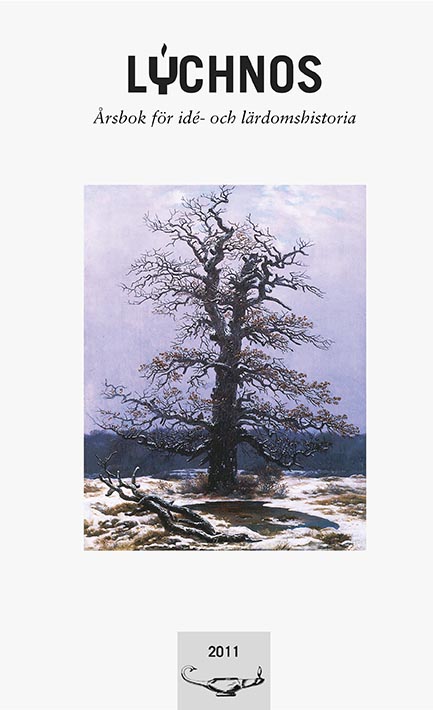Urge-to-live. Man’s escape from nature in C. S. Sherrington’s Man on his nature
Abstract
C. S. Sherrington’s Gifford Lectures from the late 1930s, Man on his nature, were an example of the kind of philosophical anthropology that flourished in the interwar years. If one pays particular attention to the rich literary language of the book, one finds a story of man’s relation to nature that does not fit in with the common notion of man’s evolution that one would expect from a researcher such as Sherrington. In the figurative starting point of the text – an imaginary picture of man in a state of nature – there is a story of man’s escape from a natural to a historical existence. From his historical vantage point in the present, man can no longer remember his previous non-historical existence, but only recall it in his founding myths. I argue that the all-present urge-to-live, that strives to keep all living organisms as integrative wholes, was the principle that made man’s escape possible in the first place. Through man’s distancing from the pre-historical state of nature, man has distinguished himself from the rest of nature. I also suggest that this story of distancing informs Sherrington’s defense of a non-reducible relationship between mind and body. The self has distanced itself from its body, just as mankind as a whole has distanced itself from nature. This ongoing work of distancing is a prerequisite for man remaining an individual; but, according to Sherrington, this prerequisite seemed to be seriously challenged by the evolutionary pressure of a growing altruism. If altruism was to grow, which seemed to be inevitable, it would challenge the exclusive and unique existence of the self in the body which had hitherto secured man’s survival through its distancing from the surrounding world.
Downloads
Published
Issue
Section
License
This work is licensed under a Creative Commons Attribution 4.0 International License. The copyright for the work published in Lychnos remains with the authors.


